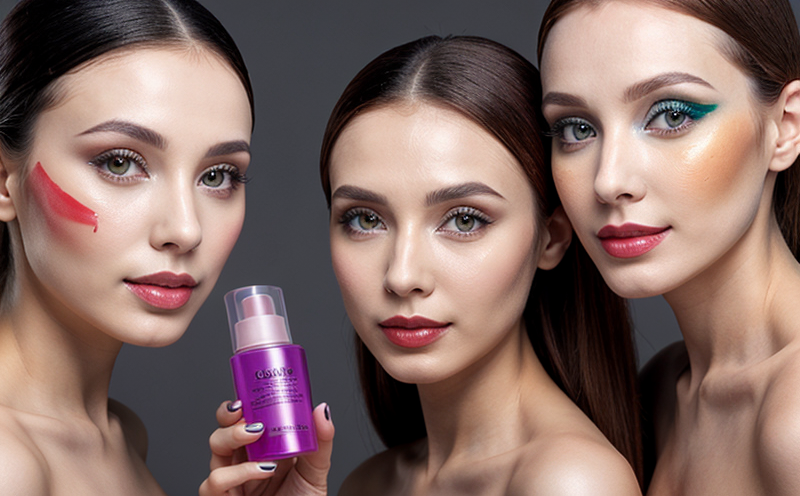Maximum Allowable Concentration Testing in Cosmetics
In the realm of cosmetics testing, ensuring that products are safe and comply with regulatory requirements is paramount. Maximum Allowable Concentration (MAC) testing plays a critical role in this process by determining the highest levels at which potentially harmful substances can be present without causing adverse effects. This service ensures that cosmetic manufacturers adhere to stringent safety standards and consumer protection laws.
The MAC test involves several steps, including sample preparation, analysis using validated techniques such as chromatography or spectroscopy, and interpretation of results against established guidelines like the European Union's Cosmetics Regulation (EC) No 1272/2008. The goal is to identify any hazardous components that might pose risks if present in concentrations exceeding the MAC thresholds.
For instance, certain preservatives used in cosmetic formulations may have known toxicological profiles when consumed internally or applied topically in high quantities. By conducting MAC tests, laboratories can confirm whether these substances fall within acceptable limits set forth by regulatory bodies. Such testing supports manufacturers in maintaining their reputation for quality and compliance while also safeguarding end-users from potential health hazards.
The importance of MAC testing extends beyond mere adherence to regulations; it reflects a commitment to responsible product development practices. Consumers increasingly demand transparency regarding the safety profiles of items they purchase, especially those intended for personal care use. By investing in rigorous MAC assessments early on during R&D stages, companies demonstrate their dedication to producing safe products that meet both legal standards and consumer expectations.
Moreover, MAC testing serves as an essential tool for identifying potential issues before they escalate into larger problems. For example, if a particular ingredient shows signs of being close to its MAC limit, further investigation can be conducted to either modify the formula or source alternative ingredients that do not reach this threshold. This proactive approach helps prevent costly recalls later down the line and maintains brand integrity.
Another key aspect of MAC testing lies in its role within larger quality assurance frameworks. Quality managers rely heavily on such data points when evaluating overall product performance across various stages of production, packaging, and distribution. Compliance officers benefit from having accurate MAC results as evidence supporting their efforts towards maintaining strict adherence to all relevant regulations.
In summary, maximum allowable concentration testing in cosmetics is crucial for ensuring the safety and compliance of cosmetic products. Through meticulous analysis and stringent adherence to established guidelines, this service provides invaluable insights that help protect both consumers and manufacturers alike from unnecessary risks associated with potentially harmful substances.
Applied Standards
The application of appropriate standards is critical for ensuring accurate MAC testing. Globally recognized organizations like the European Union, United States Food & Drug Administration (FDA), and World Health Organization (WHO) provide comprehensive guidelines that govern how these tests should be performed.
| Regulatory Body | Standard Reference |
|---|---|
| EU | EC No 1272/2008 |
| FDA | Cosmetic Labeling and Packaging Requirements |
| WHO | International Code of Marketing of Breast-milk Substitutes |
These standards outline specific methodologies for identifying and quantifying potentially harmful substances within cosmetic formulations. Compliance with these guidelines ensures that MAC testing results are reliable and consistent, thereby enhancing trust in the integrity of cosmetics across international markets.
Competitive Advantage and Market Impact
Implementing robust MAC testing strategies offers significant competitive advantages for cosmetic brands. Firstly, it enhances brand reputation by demonstrating a strong commitment to consumer safety and ethical practices. Secondly, adherence to international standards can open doors to new markets where stringent regulations are in place.
Achieving compliance through MAC testing also reduces the likelihood of product recalls or legal disputes. Companies that prioritize this aspect early on save costs associated with post-market issues, thereby improving profitability margins over time.
In addition, obtaining advanced analytical capabilities for MAC testing can differentiate a company from its competitors by showcasing state-of-the-art facilities and expertise within the industry. This differentiation becomes particularly valuable when competing in niche segments or targeting high-end clientele who place premium importance on product safety.
The broader market impact of MAC testing extends beyond individual companies to influence overall industry trends towards greater transparency and responsibility. As more brands adopt these practices, it fosters a culture of accountability that benefits all stakeholders involved—from manufacturers and suppliers to retailers and consumers alike.
Use Cases and Application Examples
The application of MAC testing is widespread across different phases of cosmetic product development. Here are some specific use cases:
| Use Case | Description |
|---|---|
| New Product Launch | MAC testing is conducted during the initial formulation phase to ensure that all ingredients meet regulatory standards. |
| Ingredient Substitution | If an ingredient in a cosmetic product needs to be replaced due to supply issues or new safety concerns, MAC testing helps verify whether the substitute is safe. |
| Batch Quality Control | To maintain consistent quality throughout production runs, random batches are tested for compliance with MAC limits. |
| Market Expansion | When entering new markets with different regulatory requirements, MAC testing ensures that products meet local standards before launch. |





